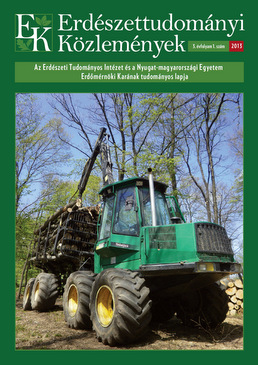Juvenile evaluation of micropropagated black locust (Robinia pseudoacacia L.) clones under sandy soil conditions
Károly Rédei, Imre Csiha, Zsolt Keserű, János Rásó & Ágnes Végh Kamandiné
Correspondence
Correspondence: Rédei Károly
Postal address: H-4150 Püspökladány, Farkassziget 3.
e-mail: redei.karoly[at]t-online.hu
Abstract
In Hungary the black locust (Robinia pseudoacacia) is one of the most important exotic stand-forming tree species. Its importance is increasing in many other countries, too. As a result of a partly new selection programme eight black locust clones have been improved for setting up clone trials and seed orchards. In the paper the juvenile growth and the stem quality of micropropagated black locust clones were evaluated under sandy soil conditions. At age of 10 the clones ‘MB17D3/4’, ’MB17D3/10’ as well as ‘PV 201E2/4’ appeared to be the most promising ones for quality wood production. Tissue culture method can be considered as a suitable tool for clonal propagating superior individuals and offering new prospects for rapid mass cloning of selected genotypes.
Keywords: black locust (Robinia pseudoacacia L) clones, micropropagation, sandy soil site conditions
Open Acces
For non-commercial purposes, let others distribute and copy the article, and include in a collective work, as long as they cite the author(s) and the journal, and provided they do not alter or modify the article.
Cite this article as:
Rédei, K., Csiha, I., Keserű, Zs., Rásó, J. & Kamandiné, V. Á. (2013): Juvenile evaluation of micropropagated black locust (Robinia pseudoacacia L.) clones under sandy soil conditions. Bulletin of Forestry Science, 3(1): 89-95. (in Hungarian)
Volume 3, Issue 1
Pages: 89-95
First published:
28 June 2013
Related content
13
More articles
by this authors
3
Related content in the Bulletin of Forestry Science*
(Forest reproductive materials production after the 2nd world war). Bulletin of Forestry Science, 10(1): 55-66.
More articles by this authors in the Bulletin of Forestry Science
* Automatically generated recommendations based on the occurrence of keywords given by authors in the titles and abstracts of other articles. For more detailed search please use the manual search.
